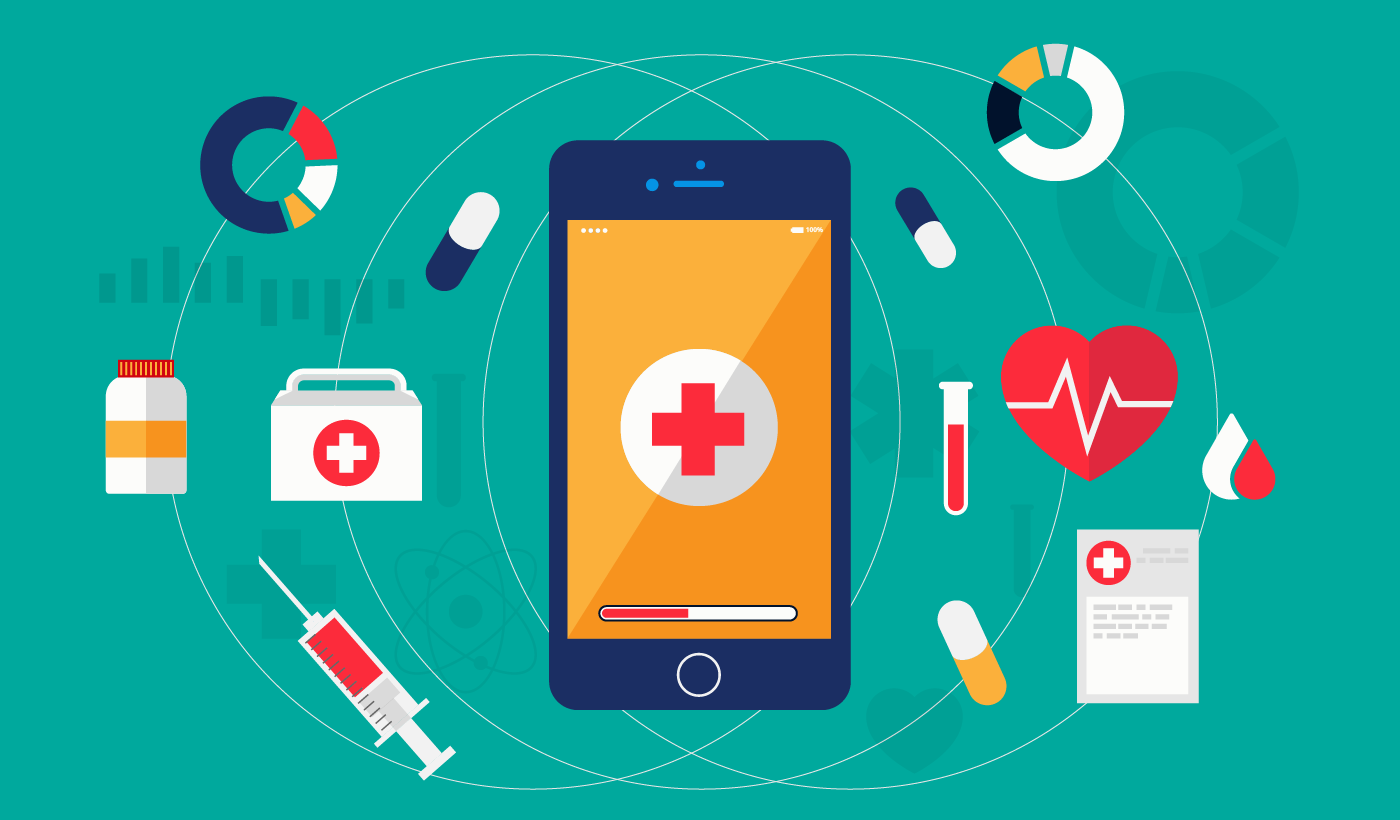Cross-Platform Mobile Health Apps
Mobile health has reached a new peak over the past few years and steadily continues its ascension. In the course of 2014-2015, health applications have accounted for 6.4% of the total 40,402 apps in all existing industries, leaving room only to news and business applications.
Today’s mobile health is able to transform any Android/iOS device into a cardiologist, nutrition specialist, fitness trainer, or any other medical consultant. Users sure are delighted to avoid visiting hospital offices for a regular medical examination or paying for the services of a personal instructor in the gym and simply download an application on their smartphone or tablet instead.
To make an application more approachable, it is reasonable to go cross-platform, so that the users of iOS and Android would all savor your idea and its implementation. But it should be resolved from the very start of the development project, which of the cross-platform frameworks suits you best. And in order to do this, you should carefully assess your application’s concept.

On track
The simplest health-oriented application you can create is an information resource, such as a collection of healthy recipes, a database of symptoms, or a fitness exercise manual. This kind of application is technically easy to create on any cross-platform tool, since it constitutes a structure of textual and simple graphical information only, and doesn’t require intricacy in development. And as shown by a nutrition data application that provides information about the compatibility of food with a certain blood type, even a simple application can be truly captivating and useful.
Various kinds of trackers are also in demand. Calorie counters, fitness calculators, and health managers that keep records of medical conditions – the main idea of all these applications is to enable information input and generate detailed statistics afterwards. Trackers may or may not be complemented with reminders, which send notifications for a user to perform a certain action (e.g., take medication/drink water/take a walk).
Unless you are concerned about design not being native, you can use Cordova and develop any of the mentioned types of applications easily, cost-effectively, and quickly - in a matter of 1-3 months. Otherwise, you can take advantage of Xamarin. With Xamarin.Forms you can tailor the interface to the platform’s unique looks and, if necessary, enhance it in Xamarin.iOS or Xamarin.Android. By separately developing a native design, you will surely prolong your development process, but in exchange, gain users’ admiration for providing them a genuinely native experience.
Making sense
The ultimate allure of mobile health applications lies in how intelligent they can get. Being well-versed in the healthcare software industry on the whole, ScienceSoft can affirm that sensor technology is a real stepping stone for mobile health. As sensors are gradually becoming smaller, cheaper, and are much easier to embed into a smartphone or a tablet, they provide developers with a whole new level of capabilities.
Thanks to such built-in sensors as gyroscope, accelerometer, and simple cameras, each and every modern mobile device can run a heart rate detecting, blood pressure scanning, step counting, or a vision testing application on its own. But with the help of various medical attachments, including sensor-enabled wristwatches, necklaces, headbands, chest straps, or even handheld ultrasound devices, your smartphone or tablet can become a portable professional medical device. However, there is some controversy about developing a cross-platform application that would support these complex features.
A smart choice for such an application is Xamarin. Despite the development process being extended due to the complex and multilevel testing, this cross-platform tool grants efficient results. Xamarin compiles its code to native and, in this manner, lets an application seamlessly access all the device’s hardware. Looking back at a similar ScienceSoft development project of a heart rate indicator, which involved using a connectable sensor-enabled chest strap, it’s evident that Xamarin would have been a perfect fit for making this application cross-platform.
Sadly, Cordova is by default not compatible with creating a cross-platform application that would freely access specific facilities. The upside is that this initial limitation can be fixed. If Cordova’s HTML, CSS, or Java is enhanced with extra C++ coding, the application will be able to connect to the platform’s hardware just as a Xamarin application can. Needless to say, the process will take time and budget, but this is a worthwhile sacrifice for the implementation of your original idea.
It is hard to determine in theory whether the amount of time spent on Cordova enhancement would equal the time of complex Xamarin testing, and whether the budget for extra C++ coding on Cordova would meet the expenses of Xamarin C# development. To be on the safe side, it is always better to engage a healthcare app development company for professional consulting and discuss all the merits with those who have experience in all sorts of projects.
Summary
Creating a mobile health application is always a double win. Firstly, thanks to a healthy lifestyle catching on, you attract a lot of users. Secondly, the release of a useful health application shows that you yourself care about your users. So in fact, you gain not just users’ attention, but also their subconscious sympathy.
You will definitely multiply your success and reinforce the trust of your users with a great application performance by making the right choice between Xamarin and Cordova and, as a result, presenting a powerful and easy-to-use health application.

